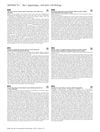Control of androgen receptor expression in human keratinocytes and in a reconstituted human epidermis model with selective antisense oligonucleotides
January 2005
in “
Experimental Dermatology
”
TLDR Antisense oligonucleotides can reduce androgen receptor levels in skin cells, suggesting potential for treating skin disorders.
The study investigated the use of antisense oligonucleotides to control androgen receptor (AR) expression in human keratinocytes and a reconstituted human epidermis model. Researchers applied antisense oligonucleotides to primary human foreskin keratinocytes, non-foreskin keratinocytes from young and older female donors, and a reconstituted human epidermis. The transfection process involved a liposome-mediated system, and AR expression was measured using Western blotting. Results showed a reduction in AR expression by approximately 25% in foreskin keratinocytes and between 46% and 70% in the reconstituted epidermis after recovery periods. The study demonstrated that antisense oligonucleotides could effectively inhibit AR expression, suggesting potential for developing topical treatments targeting androgen-related skin disorders.

